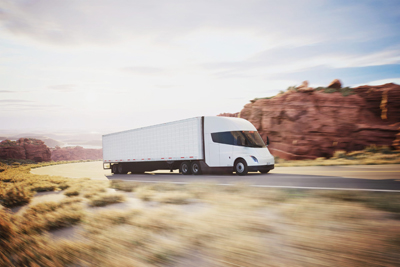Tesla is set to deliver its highly-anticipated all-electric Semi on Dec. 1. Will the truck live up to the hype?
Roughly two months ago, CEO Elon Musk announced Tesla would deliver the Semi to Frito Lay locations in California, following the vehicle’s acquisition of an EPA certificate of conformity.
Tesla and Musk have teased the "imminent" arrival of the Semi for several years. Last year, Tesla and Frito Lay both confirmed deliveries in December 2021, only for the trucks to never make it to their destination.
Fast forward a year, and what has changed?
For starters, last year, Tesla did not earn an EPA certification for the Semi, which is required by law. The fact Tesla finally received this certification and set up a special delivery event in Nevada can only lead Musk’s loyal believers and even skeptics to believe the Semi is finally here.
Now that the Semi is finally here, or will be in a few hours from when this article is published, the real questions begin to surface: Will it really change the trucking industry? How does the Semi match up to Class 8 EVs already on the market? How long will it take to get one?
Will it Really Change the Trucking Industry?
The Tesla Semi is no doubt a huge development in the world of EV trucking. Will it change the industry?
If it can live up to its astronomical range predictions, rumored to be around 500 miles when pulling an 81,000-pound load, it surely can raise the bar for competitors. The currently offered EV trucks on the market from Volvo, Freightliner and Nikola offer significantly less in terms of range on a full charge. However, many of these trucks are geared toward local or regional logistics.
Where Tesla has set itself apart from competitors is in terms of tech, and just looking at the Semi, it’s clearly different from the rest. The throne is set in the center of the cabin, and dual monitors will track data and analytics for performance while offering basic features like navigation. Whether it is better or not, well, we’ll have to wait for some trucking experts drive it for a while.
How Does the Semi Match Up to Class 8 EVs Already on the Market?
The Volvo VNR’s highest-range trim is its 6×4 Tractor, which packs 275 miles of range when configured with its six-battery offering. It also is capable of regenerating between 5% and 15% of its energy through braking. It has a top speed of 68 mph, and is an ideal fit for “local distribution and regional transportation with planned routes and frequent stops,” especially food service delivery, Volvo said. This may be why McDonald’s Canada ordered a few.
The Freightliner eCascadia just was delivered for the first time at the end of November, with Penske commemorating first deliveries. This truck packs a 230-mile range rating with its top-of-the-line offering. Freightliner only offers a day cab, and with the range specs, it would also be ideal for local or regional deliveries. Its 80% charging in 90 minutes will keep deliveries going without much of a delay.
Nikola’s Tre offers 330 miles of range, the most impressive number thus far. Nikola has ramped up production of the Tre recently to reach 75 units in Q3. Arguably the best competitor to the Tesla Semi, the Tre may not offer charging speeds as fast as the eCascadia---80% charge in 160 minutes---but its impressive range ratings make it more applicable for longer routes.
The Semi offers the best of all of these, along with a 500-mile range rating, according to recent tests performed by Tesla. At first glance, the Semi just seems like a market-leading version of most Class 8 EVs on the market.
Tesla still leans on self-driving and autonomous trucking as where the Semi will truly set itself apart from competitors. It may be some time before truckers can let the Semi drive them between hubs.
Teslarati received several emails from readers who were skeptical of the 500-mile claim from Musk. The publication was asked several times whether the trip was taken on a single charge.
How Long Will it Take to Get a Tesla Semi?
Tesla Semi production could reach 100 units this year, company Chair Robyn Denholm said. Next year, Tesla wants to build 50,000.
The potential production rate of 50,000 units is nothing to bat an eye at. However, Tesla has some big plans for 2023, and they include ramping Cybertruck production at Gigafactory Texas, a potential revamp of the Model 3 in Fremont, CA, and more production in Germany and China.
The Semi will undoubtedly reach higher production rates next year, but it will be difficult to scale production of a fresh vehicle this quickly.
Battery availability also comes into question, as it was the issue that kept the Semi from being built two years ago when Musk announced volume production would kick off. Tesla is building a lot of cars and using a lot of batteries. We know Tesla isn’t using the 4680 cell for the Semi, which means the much more widely available 2170 cell will not limit the Semi’s production rate.
How long it takes to get a Semi is purely reliant on how fast Tesla can scale production. Tesla has typically done a good job of scaling its passenger vehicles, but the Semi is a different animal.
Tesla’s Semi Delivery Event will take place the evening of Dec. 1 at Gigafactory Nevada in Reno.










